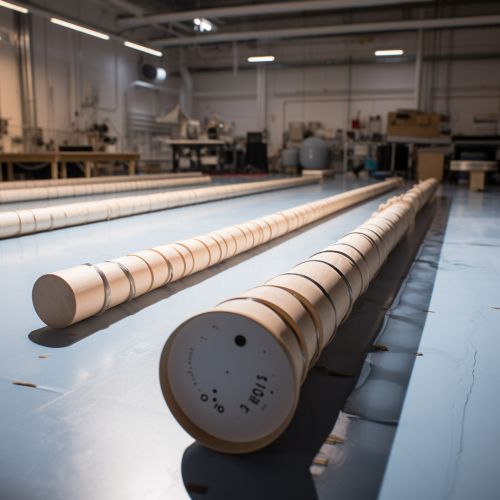Paleoclimatology and Ice Core Records
Introduction
Paleoclimatology is the study of past climates. Since it is not possible to go back in time to see what climates were like, scientists use imprints created during past climate, known as proxies, to interpret paleoclimate. Organisms, such as diatoms, forams, and coral serve as useful climate proxies. Other proxies include ice cores, tree rings, and sediment cores (which contain microscopic foraminifera or diatoms).Learn more about Paleoclimatology.
Ice Core Records
Ice cores are one of the most effective, though not the only, methods of recreating long term climate. Ice core records can be used to reconstruct temperature, atmospheric circulation strength, precipitation, ocean volume, atmospheric dust, volcanic eruptions, solar variability, marine biological productivity, sea ice and desert extent, and forest fires. This information is vital for climatologists and others interested in climate change, as it provides clear evidence of a long-term natural climate variability, which can be used to predict future variations, and to separate anthropogenic climate change from natural climate variability.Learn more about Ice Cores.


Paleoclimatology and Ice Core Records
Paleoclimatology and ice core records are interconnected. By studying ice core records from the poles, scientists have been able to identify a pattern of climate change over the past few hundred thousand years. This information is invaluable in helping us understand how climate has changed in the past, and how it might change in the future.
Climate Proxies
Climate proxies are preserved physical characteristics of the past that stand in for direct meteorological measurements and enable scientists to reconstruct the climatic conditions over a longer fraction of the Earth's history. Reliable global records of climate only began in the 1880s, and proxies provide the only means for scientists to determine climatic patterns before record-keeping began.Learn more about Climate Proxies.
Paleoclimatology and Climate Change
Paleoclimatology data are derived from natural sources such as tree rings, ice cores, corals, and ocean and lake sediments. These proxy climate data extend the archive of weather and climate information hundreds to millions of years. The data include natural climate variability (e.g., El Niño) and estimated solar, volcanic, and human influences on climate. The Paleoclimatology Program is engaged in improving our understanding of past climatic conditions, and their impact on our current climate system.Learn more about Climate Change.
Conclusion
In conclusion, the study of paleoclimatology and ice core records is a vital part of understanding our past climate, and predicting future climate change. It is a field that requires a deep understanding of many different scientific disciplines, and the data gathered from ice core records is invaluable in our understanding of climate change.
